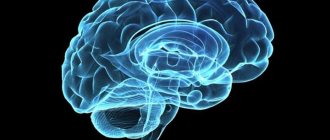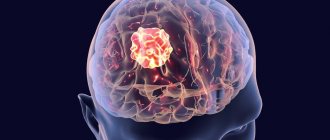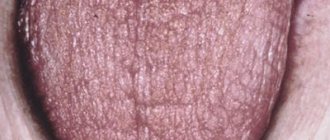Tuberculous meningitis is an inflammation of the meninges caused by Mycobacterium tuberculosis.
Our expert in this field:
Nagibina Margarita Vasilievna
Infectious disease doctor, doctor of medical sciences, professor
Call the doctor Reviews about the doctor
Some numbers and facts:
- Around the world, about 2 billion people are infected with tuberculosis. This is approximately a third of the world's population.
- Approximately 10% of patients develop signs of tuberculous meningitis.
- The higher the incidence of tuberculosis in a society, the more cases of damage to the meninges of tuberculous origin.
- Despite all the advances of modern medicine, tuberculosis still remains one of the biggest global health problems.
Classification
By form: basilar meningitis, meningoencephalitis, cerebrospinal meningitis.
According to the nature of the course of tuberculous meningitis: acute, subacute, chronic, recurrent.
PATHOGENESIS AND PATHOMORPHOLOGY
The most characteristic morphological manifestations of tuberculous lesions of the soft membranes of the brain are the rash of miliary tubercles and the appearance of serous-fibrinous exudate in the subarachnoid space. The membranes of the brain lose their transparency and become cloudy, covered with a jelly-like effusion. This process is most intensely expressed at the base of the brain. Tuberculosis tubercles can also be located on the outer surface of the brain, in the area of the lateral (Sylvian) fissure, along the cerebral vessels, but here their number is significantly less than at the base of the brain. The tubercles, the size of a millet grain or slightly smaller, initially have a grayish color and are hardly noticeable, but then, as a result of caseous decay, they acquire a yellowish color and become clearly visible. Inflammatory changes in the acute stage of tuberculous meningitis are of a pronounced exudative nature. Microscopically, diffuse infiltration of the soft meninges with lymphocytes and macrophages is detected; polynuclear cells are less common. The tubercles have a characteristic epithelioid structure and contain giant cells. In the center of several tubercles there is caseous decay. Infiltrates of lymphocytes and plasma cells form around the venous vessels. As a rule, with tuberculous meningitis, not only the membranes, but also the substance of the brain are affected. The ventricles of the brain are distended and contain cloudy fluid.
Atypical variants of the course of tuberculous meningoencephalitis against the background of HIV infection
L.L. KORSUNSKAYA, Crimean State Medical University named after. S.I. Georgievsky, S.V. SHIYAN, Crimean Republican Institution “Anti-tuberculosis dispensary No. 1”
Summary
The article analyzes the literature and our own data on the problem of the atypical course of tuberculous meningoencephalitis against the background of HIV infection. Examples of atypical variants of the course of tuberculous meningoencephalitis based on the type of traumatic brain injury, acute psychosis (delirium), purulent meningoencephalitis, and cerebrovascular accident are given.
Keywords
tuberculous meningoencephalitis, atypical forms, HIV infection
According to system monitoring data from the Ukrainian Center for Prevention and Control of AIDS, as of January 1, 2008, 122,314 cases of human immunodeficiency virus (HIV) infection were registered in Ukraine. An HIV-infected person, especially in the later stages of development of HIV infection, is susceptible to many infectious diseases, primarily tuberculosis, since 90% of the adult population of Ukraine is infected with Mycobacterium tuberculosis. According to the Institute of Phthisiology and Pulmonology of the Academy of Medical Sciences, the absolute number of patients with HIV-associated tuberculosis is growing in Ukraine: 2000 - 233, 2001 - 313, 2002 - 414, 2003 - 955, 2004 - 1218, 2005 - 1566 people [1, 5].
According to the World Health Organization Clinical Guidelines for HIV-Associated Tuberculosis, the lifetime risk of developing tuberculosis depends on the presence of HIV-positive status and is 50% in people with HIV infection [2]. For both tuberculosis and HIV infection, the main target in the human body is a subpopulation of T-helper cells, therefore, in the presence of coinfection, the risk of developing tuberculosis increases, and HIV infection from the asymptomatic phase progresses more quickly to the stage of clinical manifestations.
As HIV infection progresses, the immune system loses the ability to inhibit the growth and spread of mycobacteria, so disseminated and extrapulmonary forms of tuberculosis develop more often [6]. It should be noted that patients with extrapulmonary tuberculosis are detected in a timely manner only in 25-30% of cases and therefore often do not receive adequate qualified care.
In the classification of nervous system lesions in HIV-infected people and in acquired immunodeficiency syndrome, tuberculous meningitis is classified as secondary neuroAIDS, that is, it is caused by opportunistic infections, in some cases by mycobacteria [3, 4, 7]. However, some authors [11, 12] emphasize that diagnosing the etiology of tuberculous meningoencephalitis in HIV-infected and AIDS patients is extremely difficult.
Tuberculosis of the central nervous system and meninges is an infectious disease caused by Mycobacterium tuberculosis, which occurs primarily or secondary with the formation of specific inflammation in the affected areas and serous changes in the cerebrospinal fluid. In typical cases, it develops subacutely over several weeks. In 70% of cases, tuberculous meningoencephalitis occurs, in 26% of cases - meningitis; 4% are rare forms: meningoencephalomyelitis, brain tuberculoma, as well as atypical forms of meningoencephalitis [6].
In a typical course, at the onset of the disease, a severe headache occurs, which, as a rule, is not relieved by analgesics. At the same time, manifestations of asthenia progress: general weakness, rapid fatigue, changes in behavior, decreased or loss of appetite, decreased ability to concentrate. After some time, sometimes simultaneously with the appearance of headache, meningeal syndrome develops: rigidity of the neck muscles, Kernig's and Brudzinski's symptoms. Possible nausea and vomiting, accompanied by general hyperesthesia, photophobia and hyperacusis. In more than 96% of cases, tuberculous meningoencephalitis affects the basal parts of the brain, as a result of which damage to the III, VI, VII, IX pairs of cranial nerves is typical. Spinal cord roots may be involved. The appearance of focal symptoms suggests the development of damage to the membranes and substance of the brain in the patient [10].
When the membranes and substance of the brain are damaged due to tuberculous etiology, the cerebrospinal fluid is transparent, colorless or slightly xanthochromic, can become opalescent, and flows out under increased pressure; the protein content is usually increased, sometimes up to 1 g/l. Positive globulin reactions of Pandi and Nonne-Apelt. Pleocytosis 60-200 x 106 or more cells, the cellular composition of the cerebrospinal fluid is lymphocytic up to 100%. Characteristic of tuberculous meningoencephalitis is the persistence of pleocytosis in the cerebrospinal fluid within 6-8 weeks from the onset of meningeal syndrome, regardless of adequate etiotropic therapy. One of the dominant symptoms is the loss of a delicate fibrin film after a day of settling of the cerebrospinal fluid. It is important to note the characteristic decrease in sugar content below 50% of its concentration in the blood and chlorides below 110 mmol/l. Pathognomonic for tuberculous meningoencephalitis is the detection of Mycobacterium tuberculosis in the cerebrospinal fluid, which, however, is quite rare.
According to the Order of the Ministry of Health of Ukraine No. 610 of November 15, 2005 “On the implementation of an adapted DOTS strategy in Ukraine” [5], treatment of tuberculous meningitis is carried out in a specialized hospital until clinical symptoms are eliminated and the cerebrospinal fluid is sanitized. Etiotropic antimycobacterial therapy, taking into account the sensitivity of mycobacteria, is of crucial importance, which helps prevent the fatal outcome of the disease. The main antimycobacterial chemotherapy drugs used to treat tuberculous meningoencephalitis are isoniazid in a daily dose of 5 ml of a 10% solution intravenously or intramuscularly, rifampicin 0.6 g/day parenterally or per os, pyrazinamide 2.0 g/day, ethambutol 1.6 g/day in suppositories or per os, streptomycin 1.0 g/day intramuscularly [6, 10]. Continuity of antimycobacterial therapy prevents the development of mycobacterial resistance to drugs [5].
The diagnosis of tuberculous lesions of the meninges and the central nervous system, even in the absence of concomitant immunodeficiency, is often not obvious at the initial stage of the disease and is determined only at the stage of manifestation of clinical manifestations, when a meningeal symptom complex appears. In HIV-infected patients, according to our observations, the atypical course of the disease is much more common and reaches 40% of cases.
We present 4 clinical cases of difficult differential diagnosis of tuberculous meningoencephalitis in HIV-infected patients admitted to the Crimean Republican Anti-TB Dispensary No. 1.
Patient K., 33 years old, was admitted to the anti-tuberculosis dispensary No. 1 in November 2007 with a diagnosis of disseminated tuberculosis S1-S2 of both lungs (MBT+). Tuberculosis was discovered when the patient consulted a doctor with complaints of cough with sputum, low-grade body temperature, and shortness of breath on exertion. From the life history: drug use for 7 years. HIV infection was detected in 2007. CD4 level was 64 cells. Anti-tuberculosis therapy was prescribed. The patient refused the proposed antiretroviral therapy.
There were no neurological complaints upon admission. The patient was prescribed adequate antimycobacterial therapy taking into account the sensitivity of mycobacteria. After three months of treatment, the patient’s condition was satisfactory and he had no complaints. However, during X-ray monitoring of the chest organs in early February 2008, sharply negative dynamics were noted due to an increase in infiltration on the right at the level of the third rib. A general blood test revealed anemia, hypochromia, toxic granularity of erythrocytes, leukocytosis 12.8 x 109, an increase in erythrocyte sedimentation rate (ESR) to 76 mm/h, a shift of the leukocyte formula to the left to 41% of band leukocytes.
On February 13, 2008, the patient suddenly fell while walking and lost consciousness for several minutes. Upon subsequent examination, soft tissue bruises (scarified wounds, bruises) were recorded on the face and scalp. A neurological examination revealed cerebral and focal symptoms. Pupils D = S, photoreactions are preserved, sideways movements of the eyeballs are limited and painful. Photophobia. Hyperacusis. Weakness of grin on the left. Tendency to deviate the tongue to the left. Pain on percussion of the skull. Soreness of Kehrer's points on both sides. Kernig's and Brudzinski's signs are negative. Hypoesthesia of the left half of the body. Left-sided moderate hemiparesis. Computed tomography revealed no pathological changes in the brain. The development of neurological symptoms after a fall with loss of consciousness, the presence of bruises of the soft tissues of the head gave reason to suspect a closed craniocerebral injury: brain contusion. To exclude possible traumatic subarachnoid-parenchymal hemorrhage, it was decided to perform a spinal puncture, the results of which were not consistent with the previous clinical picture. The liquor is slightly cloudy, slightly xanthochromic, and flows out under increased pressure. Protein 0.66 g/l. Positive globulin reactions. Cytosis of 176 cells (lymphocytes 30%). Sugar 2.0 mmol/l, chlorides 90.0 g/l. The culture of the cerebrospinal fluid contains Mycobacterium tuberculosis. Thus, a diagnosis was made: tuberculous meningoencephalitis. Antimycobacterial therapy was prescribed according to approved protocols along with hormonal (prednisolone) and symptomatic therapy [4, 8]. Despite the treatment, the patient's condition progressively worsened. Two weeks later, a disturbance of consciousness developed, the patient became stunned and inadequate. Meningeal syndrome, signs of brain stem edema, and positive Babinski sign on both sides increased. Three weeks after the onset of the disease, the patient died. Pathological diagnosis: HIV infection, AIDS period: generalized lymphadenopathy, disseminated tuberculosis of the lungs, liver, spleen, right-sided pleurisy, tuberculous meningoencephalitis. Edema is a swelling of the brain. Anemia. Purulent bronchitis. Pneumosclerosis. Pulmonary edema. Dystrophy of parenchymal organs.
Patient B., 32 years old, was admitted to TB dispensary No. 1 in 2007 from a psychiatric hospital, where she had been taken the day before by ambulance with suspected acute delirium. From the medical history: HIV infection was diagnosed two years ago; she did not take antiretroviral therapy because she led an antisocial lifestyle and used drugs for several years. In July 2007, the patient was discharged from anti-tuberculosis dispensary No. 1, where she underwent a course of inpatient treatment for disseminated pulmonary tuberculosis (MPT+), and continued anti-tuberculosis therapy at her place of residence. Two weeks later, severe psychomotor agitation suddenly developed; relatives suspected the use of psychotropic substances and called an ambulance.
Upon admission, the patient was in a severe condition, with severe psychomotor agitation and was not available for contact. Screams loudly and hallucinates. The pupils are dilated, D = S, reactions to light are sluggish, paresis of the abducens nerve on the left. Dysphagia. Repeated vomiting. Severe meningeal syndrome. Tendon reflexes are torpid, without convincing side differences. Does not control the function of the pelvic organs. A general blood test revealed anemia, hypochromia, poikilocytosis, toxic granularity of erythrocytes, leukocytosis 10.9 x 109, an increase in ESR to 52 mm/h, a shift in the leukocyte formula to the left. A lumbar puncture was performed: the cerebrospinal fluid was colorless, transparent, protein 0.99 g/l, positive protein reactions. Cytosis 304 cells (lymphocytes 50%). CSF glucose 1.8 mmol/l, chlorides 95.0 mmol/l. There were no traces of alcohol in the blood or signs of drug use by the patient. Thus, a diagnosis was made: tuberculous meningoencephalitis.
During the therapy, the patient's condition worsened over the following days. In the cerebrospinal fluid, the protein concentration increased (1.2 g/l), neutrophilic pleocytosis, and the concentration of sugar and chlorides decreased to 0.9 and 75.0 mmol/l, respectively. There were increasing signs of brain stem edema and impaired consciousness to the point of coma. On the eighth day of hospital stay, the patient died. Pathological diagnosis: HIV infection, AIDS period: generalized lymphadenopathy, disseminated tuberculosis of the lungs, liver, spleen, tuberculous meningoencephalitis. Edema is a swelling of the brain. Anemia. Pneumosclerosis. Dystrophy of parenchymal organs.
Patient G., 40 years old, was admitted in May 2007 to anti-tuberculosis dispensary No. 1 with a diagnosis of miliary pulmonary tuberculosis (MPT-), tuberculous meningoencephalitis. From the medical history: HIV infection was detected in 2007, he did not receive antiretroviral therapy, and continued to use intravenous drugs. While feeling well, he suddenly lost consciousness and was taken by ambulance to the intensive care unit, where an X-ray examination revealed miliary pulmonary tuberculosis. Upon admission, the patient is conscious, has pronounced psychomotor agitation, and is aggressively opposed to examination. Complains of a bursting headache and photophobia. On examination: pupils D = S, photoreactions are weakened, paresis of the right abducens and left facial nerves. Dysarthria. Chokes when drinking. Rigidity of the neck muscles is moderately pronounced. General hyperesthesia. Right-sided moderate hemiparesis. A general blood test revealed anemia, hypochromia, poikilocytosis, an increase in ESR to 42 mm/h. Leukopenia, shift of the leukocyte formula to the left to 10% of band leukocytes. A lumbar puncture was performed. The liquor is xanthochromic, cloudy, protein 0.726 g/l, pleocytosis of 2660 cells (neutrophils 73%). CSF sugar 1.4 mmol/l, chlorides 90.0 mmol/l. Mycobacterium tuberculosis was isolated from the culture; no secondary flora was detected. A computed tomography scan of the brain revealed changes characteristic of meningoencephalitis. Thus, despite the atypical increase in the number of neutrophils in the cerebrospinal fluid, taking into account the totality of data from clinical and instrumental examination methods, the patient was diagnosed with tuberculous meningoencephalitis.
Despite intensive therapy, the patient's condition progressively worsened. On the 42nd day from hospitalization, the patient died due to increasing symptoms of brain stem edema. Pathological diagnosis: HIV infection, AIDS period: generalized lymphadenopathy, miliary tuberculosis of the lungs, liver, spleen, intrathoracic lymph nodes, tuberculous meningoencephalitis. Edema is a swelling of the brain. Anemia. Pneumosclerosis. Dystrophy of parenchymal organs.
Patient N., 54 years old, was admitted to the anti-tuberculosis dispensary No. 1 in December 2007 with a diagnosis of relapse of infiltrative tuberculosis of the middle and lower lobe of the left, upper lobe of the right lung in the decay phase (MBT+). Changes in the lungs were detected during a medical examination when applying for a job. HIV infection was discovered in 2006 through sexual transmission. He did not receive antiretroviral therapy. CD4 level: 91 cells. The patient had no neurological complaints upon admission. After three months of inpatient treatment, against the background of a satisfactory condition, weakness of the left limbs and speech impairment suddenly appeared. I didn’t lose consciousness. Examined by a neurologist. Conscious, adequate. Complaints of headache, dizziness, double vision, photophobia, choking when eating, weakness of the left limbs. Blood pressure 160/100 mm Hg. Pupils D = S, photoreactions on the right are weakened, paresis of the oculomotor and abducens nerves on the right. Paresis of the left facial nerve. Dysarthria. Choking on solid food. Meningeal syndrome is not expressed. Hypesthesia of the right half of the face and left limbs. Left-sided severe hemiparesis. Positive Babinski sign on the left. A diagnosis was made: ischemic stroke in the territory of the right middle cerebral artery, and vascular therapy was prescribed. Over the next three days, the patient's condition began to progressively deteriorate, hallucinations, confusion, and moderate meningeal syndrome appeared. To verify the diagnosis, a spinal puncture was performed. The liquor is colorless, transparent, protein 0.33 g/l, positive protein reactions of Pandi and Nonne-Apelt. Cytosis - 84 cells (84% lymphocytes). Sugar 2.8 mmol/l, cerebrospinal fluid chlorides 95.0 mmol/l. A diagnosis of tuberculous meningoencephalitis was made, and antimycobacterial therapy was prescribed according to the current treatment protocol [4, 8].
After five months of intensive therapy, the patient’s condition is satisfactory, infiltrative tuberculosis is in the resorption phase (MBT-). Moderate left-sided hemiparesis and dysarthria remain. CD4 level: 187 cells. At the end of the intensive phase of anti-tuberculosis therapy, antiretroviral therapy was prescribed [10, 13]. The patient was discharged to continue treatment at his place of residence.
Discussion
In these cases, patients with adequate antimycobacterial therapy experienced progression of the pulmonary tuberculosis process with dissemination to other organs and systems, which led to the development of tuberculous lesions of the meninges and the central nervous system.
The first case describes the course of tuberculous meningoencephalitis, simulating traumatic brain injury. The obvious progression of the tuberculosis process in the lungs (as evidenced by changes in the blood, deterioration of the X-ray picture) against the background of HIV infection with severe immunosuppression in the absence of antiretroviral therapy contributed to the development of meningoencephalitis in the patient. Sudden loss of consciousness, the presence of bruised wounds of the face and scalp made us suspect that the patient had a brain contusion with post-traumatic subarachnoid-parenchymal hemorrhage. The weak severity of meningeal syndrome and the absence of changes on the computed tomogram complicated the diagnosis. A study of cerebrospinal fluid allowed us to make the correct diagnosis.
In the second case, a patient with a history of drug addiction was taken to a psychiatric hospital with a clinic of acute psychosis (delirium), but an examination revealed the presence of meningeal signs, which gave rise to a study of the cerebrospinal fluid and a diagnosis of meningoencephalitis.
In the third of these cases, the acute manifestation of the disease and the presence of neutrophilic pleocytosis in the cerebrospinal fluid could cast doubt on the tuberculous nature of meningoencephalitis. Against the background of HIV infection, not only an atypical course of tuberculous meningoencephalitis is possible, but also its combination with an inflammatory process of another etiology. The detection of Mycobacterium tuberculosis in the cerebrospinal fluid and the absence of positive culture results for secondary flora confirmed the tuberculosis genesis of the disease.
The fourth case demonstrates an atypical form of tuberculous meningoencephalitis of the type of acute cerebrovascular accident. The difficulty of diagnosis was the absence of meningeal syndrome at the onset of the disease. In this case, timely diagnosis and adequate antimycobacterial therapy led to the patient’s recovery.
Tuberculous meningoencephalitis has always been and remains a serious disease, even in people with normal immune status. If a patient has a combination of tuberculosis and HIV-associated damage to the nervous system, clinical manifestations may be atypical for either disease and cause significant difficulties. Considering the high infection rate of the adult population of Ukraine with Mycobacterium tuberculosis, when meningitis develops in persons with an altered immune status, it is first necessary to exclude the tuberculous etiology of the disease. Timely diagnosis and initiation of therapy will positively influence the course and outcome of the disease. Naturally, the examination pattern must also include a search for the etiological factor of the central nervous system (toxoplasma, cytomegalovirus, cryptococci, etc.) causing secondary neuroAIDS.
Literature 1. Bartlett J., Galant J. Clinical aspects of HIV infection. - Maryland: Johns Hopkins University, 2007. - 511 p. 2. Panasyuk V.O., Melnik V.M., Melnik V.P., Panasyuk O.V. Clinical classification, diagnosis and treatment of tuberculosis of the membranes of the brain and central nervous system. Method. recommendations // Ukrainian Chemotherapy Journal. - 2002. - No. 3-4(15). — P. 71-79. 3. Evtushenko S.K. et al. Diagnosis and treatment of nervous system lesions in HIV-infected individuals with primary and secondary neuroAIDS. Methodological recommendations of the Ministry of Health of Ukraine. - Donetsk, 2001. - 35 p. 4. Evtushenko S.K. et al. NeuroAIDS as one of the most pressing problems of modern practical neurology // International Neurological Journal. - 2006. - No. 5(9). — pp. 147-156. 5. Clinical protocol for the treatment of opportunistic infections and HIV-associated diseases in HIV-infected people and children with AIDS / Ministry of Health of Ukraine. - Kyiv, 2006. 6. Kornetova N.V. Tuberculosis of the meninges and the central nervous system in adults // Extrapulmonary tuberculosis / Ed. A.V. Vasilyeva. - St. Petersburg: Foliot, 2000. - P. 147-160. 7. Pokrovsky V.V., Ermak T.N., Belova V.V. HIV infection (clinic, diagnosis, treatment). - Moscow, 2000. - 488 p. 8. Systemic monitoring as a tool for timely and long-term treatment of HIV-infected and AIDS patients / Kyiv, May 27, 2008 9. Feshchenko Yu.I., Melnik V.M. Current strategy for combating tuberculosis in Ukraine. - Kiev, 2007. - 245 p. 10. Tuberculous meningitis / Ed. O.V. Panasyuka, Yu.I. Feshchenko. - Kyiv, 1998. - 247 p. 11. Yakovlev N.A., Zhulev N.M., Slyusar T.A. NeuroAIDS (neurological disorders due to HIV infection/AIDS). - Moscow, 2005. - 276 p. 12. idge TR AIDS and CNS disease. Advances in Biochemical Psychopharmacology. - New York: Raten Press, 1998. - 45 p.
Epidemiology
Among extrapulmonary forms, tuberculous meningitis accounts for only 2-3%. In recent years, 18-20 cases of tuberculosis of the central nervous system and meninges have been registered in the Russian Federation (Tuberculosis in the Russian Federation, 2011). The prevalence of TBM is a generally recognized marker of tuberculosis distress in a territory. In various regions of the Russian Federation, the prevalence of TBM is from 0.07 to 0.15 per 100,000 population. In the context of the HIV epidemic, the incidence of TBM tends to increase.
VISUALIZATION: CT, MRI
Clinical manifestations
The onset of the disease is subacute; there is often a prodromal period with increased fatigue, weakness, headache, anorexia, sweating, sleep inversion, and character changes, especially in children. Body temperature is subfebrile. Vomiting often occurs as a result of headaches. The prodromal period lasts 2-3 weeks. Then, mild meningeal symptoms gradually appear (stiff neck, Kernig's sign, etc.) Signs of damage to the III and VI pairs of the cranial nerves appear early. In the later stages, if the disease is not recognized and specific treatment is not started, paresis of the limbs, aphasia and other symptoms of focal brain damage may occur. The most typical course of the disease is subacute. In this case, the transition from prodromal phenomena to the period of appearance of membrane symptoms occurs gradually, on average within 4-6 weeks. Acute onset is less common (usually in young children and adolescents). A chronic course is possible in patients who were previously treated with specific drugs for tuberculosis of internal organs.
The first signs of meningitis
The described anomaly is a fairly common unfavorable manifestation of an infectious nature. In case of damage to the brain by harmful microorganisms, an inflammatory process begins in the membranes, which in itself is considered a dangerous condition that can cause disruptions in the functioning of the secretion of fluid and blood cells, swelling, and also an increase in the level of pressure. The study of the patient's condition is carried out in several passes. The first factors indicating the likelihood of developing the disease appear during a routine examination by the attending physician. Typical complaints are:
- Weakness of the whole body.
- Heat.
- Chills.
- Symptoms of poisoning.
- Unhealthy rashes.
- Fear of bright lights and loud sounds.
- Painful sensations in the eyeballs.
- Headache.
- Nausea and gag reflexes.
- Overactivity followed by drowsiness, etc.
If the symptoms described above are present, the doctor prescribes a lumbar puncture (a fluid sample is taken from the spinal cord). In addition, the patient must donate blood to check sugar and protein levels. The main goal of therapeutic therapy for such a deviation is the use of antibacterial, antiviral and antifungal pharmacological agents. All medications are selected individually, since the choice depends on the immediate pathogen. Treatment is carried out in a hospital setting.
Doctors use MRI as an additional clinical procedure. To conveniently and quickly make an appointment with a highly qualified specialist, use the search service -. Our company provides services for individual selection of the best option for the client, based on his wishes and requirements. On the official website you will find a lot of useful articles, reliable addresses of clinics and contact numbers of registries, and you can also find out about hot promotions and discounts.
Radiation diagnostics
CT semiotics: Changes may not be detected on images without contrast enhancement. In later stages, complications such as hydrocephalus and cerebral infarction due to ischemia can be detected. With intravenous contrast enhancement, intense accumulation of the contrast agent in the meninges is observed, mainly on the basal surface of the brain.
MRI semiotics
T1-weighted images: in the initial stages, changes are not detected; shortening of T1 (in the form of an increase in the MR signal) from the meninges can be observed as the disease progresses
T2-weighted image: exudate is usually isointense to cerebrospinal fluid (hyperintense MR signal)
FLAIR: hyperintense MR signal in the basal cisterns and sulci. Post-contrast FLAIR images may have greater specificity than post-contrast T1-weighted images in detecting leptomeningeal enhancement
Contrast-enhanced T1-weighted imaging reveals intense accumulation of contrast material in the meninges, predominantly on the basal surface of the brain. Pointed/linear areas of accumulation in the basal ganglia are characteristic of vasculitis. In rare cases, accumulation of the contrast agent in the ventricular ependyma may occur, which is characteristic of a complication of TBM - ventriculitis.
DIFFERENTIAL DIAGNOSIS is carried out with infectious meningitis of another etiology, neurosarcoidosis, meningeal carcinomatosis.
Fig. 1 CT scan of the brain in the axial plane after contrast enhancement demonstrates the typical accumulation of contrast in the basal cisterns for TBM [3]
Fig. 2 MRI of the brain, axial plane, FLAIR mode: in the basal parts of the brain (sella turcica, interpeduncular, bypass cistern, pineal region) areas of altered MR signal of increased intensity are visualized
Fig. 3 MRI of the brain in the axial plane, a – T1-VI (native), b – T1-WI (post-contrast): in the area of the cisterns of the base of the brain, uneven thickening of the meninges is detected, isointense on T1-WI (a), with intense accumulation of contrast agent (b)
Symptoms of certain types of meningoencephalitis
The extensive inflammatory process that accompanies meningococcal meningitis leads to widespread changes in the cerebral parenchyma. Morphological manifestations of the pathology are the formation of a purulent or fibrinous-purulent film on top of the cerebral parenchyma.
Inflammatory infiltrates lead to the formation of many capillaries. Tomography additionally reveals edema and perifocal hemorrhage. Meningococci often disrupt hemodynamics and liquorodynamics.
Secondary purulent meningitis is characterized by hyperemia, swelling, and filling of the subarachnoid space. The spread of the pathological process to the cerebral parenchyma leads to clinical symptoms:
- Vomiting reflex;
- Convulsions;
- Delusional syndrome.
Neurologists detect a number of pathological reflex syndromes in pathology:
- Kernig;
- Brudzinsky.
Viral forms are accompanied by skin rashes. In people with reduced immunity, septic types of nosology develop, occurring in fulminant, acute, and chronic forms.
On the second or third day, clinical symptoms are acute. Tremors, chills, and muscle cramps resemble epilepsy, but analysis of the cerebrospinal fluid shows the infectious nature of the pathology.
Serous meningitis is accompanied by inflammatory changes in the hard and soft membranes. Morphological changes have a serous course. Enteroviruses, pathogens of mumps, parainfluenza, and herpes lead to fever with a two-phase cycle. Associated damage to the central and peripheral nervous system lasts about two weeks. Catarrhal inflammatory process, muscle weakness, difficulty breathing are symptoms of a complicated type of the disease.
Clinical picture of serous meningitis:
- Strong headache;
- Vomiting reflex;
- Fundus congestion;
- The appearance of atypical reflexes – Brudzinsky, Kernig;
- Tension of the occipital muscles.
Tuberculous inflammatory process of the cerebral membranes can be observed in infants. Mycobacteria form atypical changes in the brain parenchyma. Tuberculous inflammation has three stages:
- Prodromal;
- Symptomatic;
- Terminal.
At the beginning of the pathological process, dizziness, fever, headache, and nausea are observed. Low-grade fever with nosology lasts approximately 1-2 weeks. The pathology is characterized by headaches in the forehead and back of the head.
The symptomatic phase is accompanied by the appearance of abnormal reflexes - Brudzinsky, Kernig. Neck muscle tension is common in children.
Blockage of the spinal cord causes paralysis of the muscular limbs.
The terminal stage is characterized by the appearance of pathological Cheyne-Stokes breathing - increased speed, the appearance of superficial movements. The temperature rises above 40 degrees.
Description example
Descriptive part: In the area of the cisterns of the base of the brain and the Sylvian fissures on both sides, almost symmetrically, a somewhat uneven thickening of the meninges is detected in the form of additional formations of tissue intensity of the MR signal with signs of intense diffuse-inhomogeneous enhancement on post-contrast tomograms. Symmetrical expansion of the temporal horns of the lateral ventricles with periventricular edema. Internal occlusive hydrocephalus.
CONCLUSION: MR picture of widespread uneven thickening of the meninges in the area of the cerebral cisterns and Sylvian fissures. Internal occlusive hydrocephalus. (depending on the medical history, differentiate between proliferative meningitis, leptomeningeal metastasis or tumor-lymphoma).
List of used literature and sources
- Central Nervous System Tuberculosis: An Imaging-Focused Review of a Reemerging Disease / MS Taheri // Radiology Research and Practice. 2015. - 2015: 202806.
- Diagnostic imaging. Brain / Anne G. Osborn, Karen L. Salzman, and Miral D. Jhaveri. 3rd edition. ELSEVIER. Philadelphia, 2021. P.1237. ISBN: 978-0-323-37754-6
- Tuberculous meningitis [Electronic resource] / Radiopaedia.org: website. – URL: https://radiopaedia.org/articles/tuberculous-meningitis (05.11.2018)
- Diseases of the nervous system: A guide for doctors: / Ed. N. N. Yakhno, D. R. Shtulman. —2nd edition, revised and supplemented. - M.: Medicine, 2001. - p. 744.
- Neurology: national guide / ch. ed. E.I. Gusev, A.N. Konovalov, V.I. Skvortsova, A.B. Gekht. – M.: GEOTAR-Media, 2009. – 1035 p.
- Federal clinical guidelines for the diagnosis and treatment of tuberculous meningitis in children / I.F. Dovgalyuk, A.A. Starshinova, N.V. Korneva, L.V. Poddubnaya. – Russian Society of Phthisiologists. 2015.










